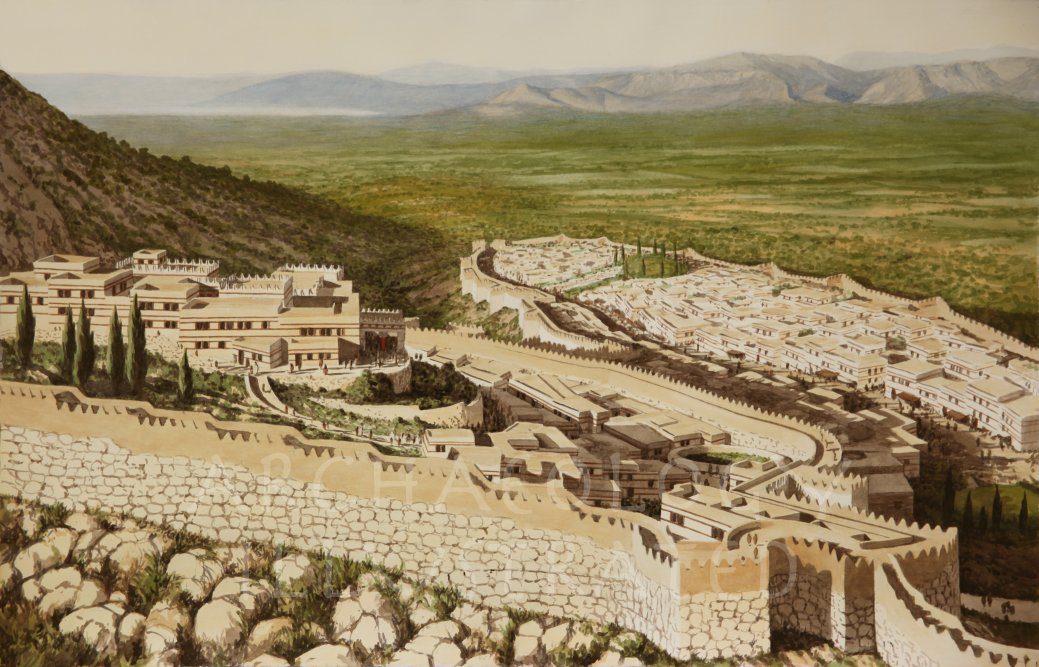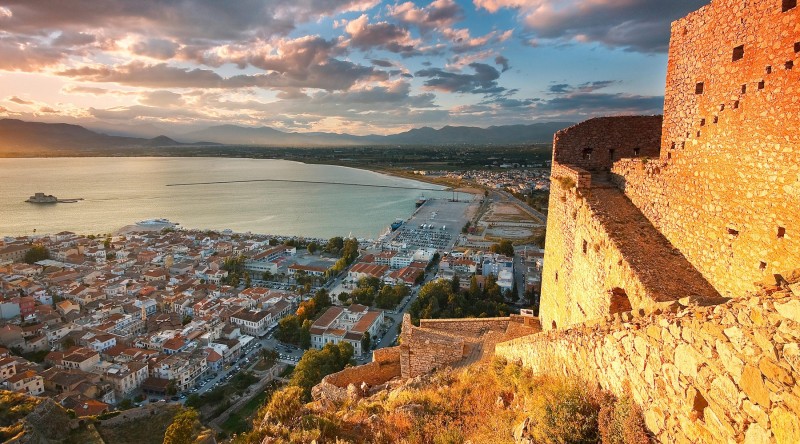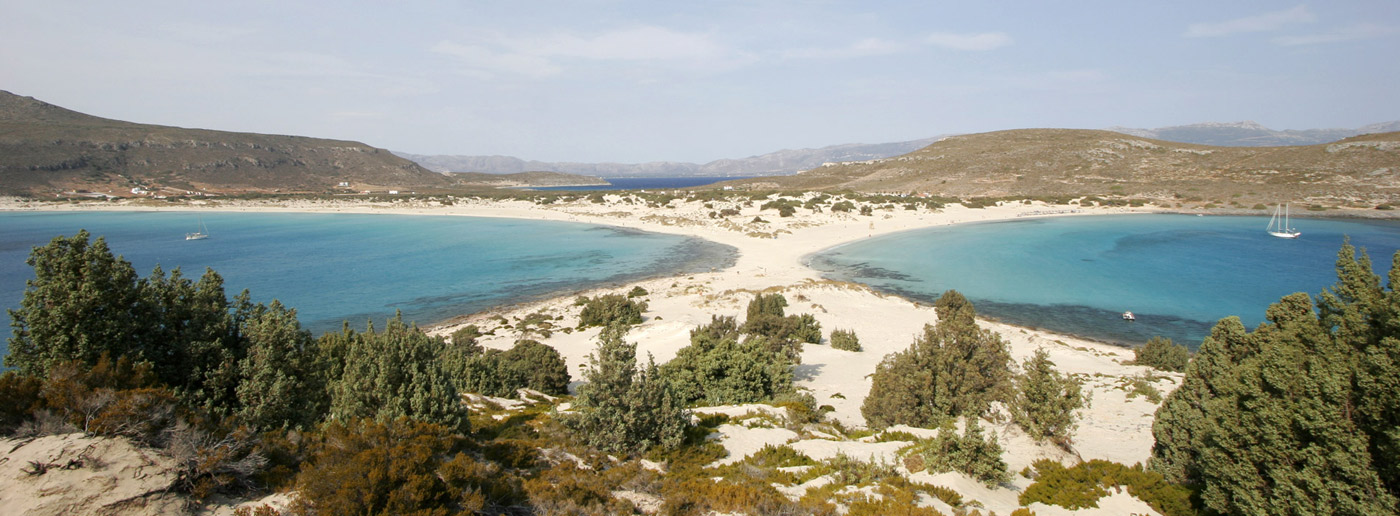(Editor’s note: This post on Peloponnese is part of our continuing series of travel stories by and for Europe-based expats about destinations the tourists miss.)
By LYNN EVANS
In 2016, the Lonely Planet travel guide named the Peloponnese region of southern Greece the No. 1 holiday destination.
Luckily, the following year it was not overrun by tourists. Most tourists flock to the Greek islands and ignore the holiday resorts on the mainland.
They don’t know what they’re missing!

PATRICK LEIGH FERMOR AT HOME IN GREECE
Lonely Planet wasn’t the first to recognise the natural beauty of the Peloponnese and Mani, which includes southern Peloponnese.
Legendary travel writer, soldier and adventurer Patrick Leigh Fermor travelled around the area and eventually picked his favourite spot and built a house there in the village of Kardimyili.
Now, Kardimyili is full of tourists all year round and people resort to walking in the road as the pavements are full.
Otherwise, Peloponnese is virtually an island, and it often feels like an island with the slow pace of life enjoyed by the villagers there.
It is cut off from the mainland by the Corinth Canal, an amazing feat of engineering conceived in ancient times, but only realized in the late 19th Century.
You can stop on the bridge over the canal and see how spectacular it is. You might be tempted to have a quick snack there, but if you are driving, take the road to Epidaurus and turn left at the sign for Camping Isthia Beach.
On your left, you will find a fish taverna, O Michaelis at Kechries 20100, Corinthia, which is very good and cheap.
The fish and seafood are always fresh, and you can watch them being grilled over wood in the grill-house just outside the taverna.
If you go to the Peloponnese in summer you might be able to see a play in the ancient theatre of Epidauros. The acoustics are so amazing that if a small coin is dropped in the centre of the stage even the people in the top tier of the theatre can hear it.
Peloponnese has everything
 Why is the Peloponnese perfect? Because it has everything!
Why is the Peloponnese perfect? Because it has everything!
The majestic Tayegetus Mountains range that ends at the sea; medieval villages such as Monemvasia, the former capital of the eastern Byzantine empire, Mystras; monasteries high on rugged mountains; glorious countryside, including “seas” of silver-green leaves of the ever-present olive trees (they even grow on beaches) and beautiful beaches which are generally nearly deserted.
This makes quite a refreshing change from the packed beaches of the Greek islands.
• Visitors who enjoy hiking can follow the Profitis Ilias (Prophet Elias [sun]) trails up to the largest and highest natural pyramid of the Tayegetus. There are local legends that tell of portals to the underworld under the natural pyramids of the Tayegetus. Legend has it that these were closed by Hercules.
• The highest pyramid can be seen from the Faris Hotel, which is also a taverna. It is a great place to see eagles, friendly dogs, cats and the genial owner, George. It’s located above the village of Gorani and the Gola monastery, which is open to the public, at least in summer, except on Sundays.
• Stop at the Faris Hotel for a meal, snack, drink, or for the night and ask George about its opening times, as they vary according to the season. If you enjoy peace and above all quiet, this hotel is perfect. You can hear the faint tinkling of goat bells and birdsong, but not much else. It’s only half-an-hour’s drive to the beach at Gythio, and less than half an hour to the city of Sparti (remember the film ‘Sparta’?).

• Gythio has a pretty harbour, and if you walk (or drive) to the end of it, you will find a cheap and cheerful family-run taverna tucked away in a corner. You can have meat fish or vegetarian dishes and gaze out over the harbour, away from the kamakis (hunters) inviting you into the tavernas you are trying to walk past on the promenade.
However, if you pass Gythio, you can find small traditional tavernas on the roadside. For the freshest fish, try to find a small taverna on the beach, just past Barthi, off the main road. Ducks swim in the sea in warm spring water, there are shady trees to sit under and in winter, there’s a roaring fire. If you do find this road, you will see the traditional buildings of the area, they are towers, with lower buildings attached to them.
• If you drive to Neo Italo, you will see some breath-taking scenery. Drive as far as you can along the beach road and eat at the fish taverna located above the sea and rocks. You can see it from Neo Italo, just head for it. All the tavernas in the villages close to Neo Italo are good. If you go inland, try the mezes at O Platanos Taverna.
Just follow the road!
The main city in this southern part of the Peloponnese is Kalamata, famous for its olives. There are several beaches around it, and there’s an airport there.

Corinth
Corinth marks the beginning of the Peloponnese. Corinth itself is full of history; there’s the modern town, ancient Corinth, where Saint Paul addressed the Corinthians, and perched high above these sites is Akrocorinth.
Most tourists don’t bother to visit this ancient site, but it is fascinating. The road up to it isn’t perfect, but there’s a welcome taverna just outside the gates of this ancient fortress. Akrocorinth was added to by a succession of builders of different nationalities.
The Italians, Franks, Byzantines, Turks and of course the Greeks, all built there in their traditional architectural styles.
It’s usually cold and windy at the site, so take a jacket. The view is incredible though, even from the taverna, so, as you can imagine, from the top of the city, it is even more spectacular. Not many tourists get up to Akrocorinth; it isn’t on many tourist itineraries, so you will be free to explore it at your leisure.

Mycenae
If you enjoy exploring ancient sites, you’ll love Mycenae, once the home of Agamemnon and Clytemnestra. The lion gates into the city are still impressive. The treasury is located across the road from the palace, but there isn’t much of interest there.
Spend time in the Mycenae Museum, as there is a lot to see.

Nafplio
Nafplio, the first capital of Greece after the Turkish occupation ended is in the Peloponnese. It’s a picturesque town oozing history.
The 1821 war against the Turkish occupation of Greece began in the Peloponnese and Mani. One of the Greek heroes, Kolokotronis, was later imprisoned in the fortress, Bourtzi, on the islet of Agioi Theodoroi, just off Nafplio, and later he was transferred to the Palamides fortress, high above the city.
If the weather is good you can take a boat to Bourtzi. These days you can drive to this, although in the not too distant past, visitors had to walk up the (alleged) 999 steps to get to it.
Take care if you go clambering around the ruins, as the marble and large stones can be treacherous. The old Italianate buildings add interest to the city, and most have been well-preserved. Syntagma (Constitution) Square in the city is worth a visit, although it’s a lot smaller than the one in central Athens which houses the parliament building.
It’s possible to visit Corinth, Mycenae, and Nafplio in a day, if you drive, hire a taxi, or go on a private tour, such as the ones offered by Enjoy Greece Tours.
So, forget the Greek islands, for your next holiday, go to the Peloponnese and Mani.
 About the author:
About the author:
Lynne Evans is originally from Wales but is an inveterate traveller. She is passionate about writing and feels compelled to write something every day.
Lynne has visited many countries in Europe and South Asia. Working as a freelance writer gives her opportunities to travel.
She’s currently living in her favourite country, Greece, in Athens. In the past she was always leaving Greece and then returning. This time she wants to stay, despite the economic situation.














